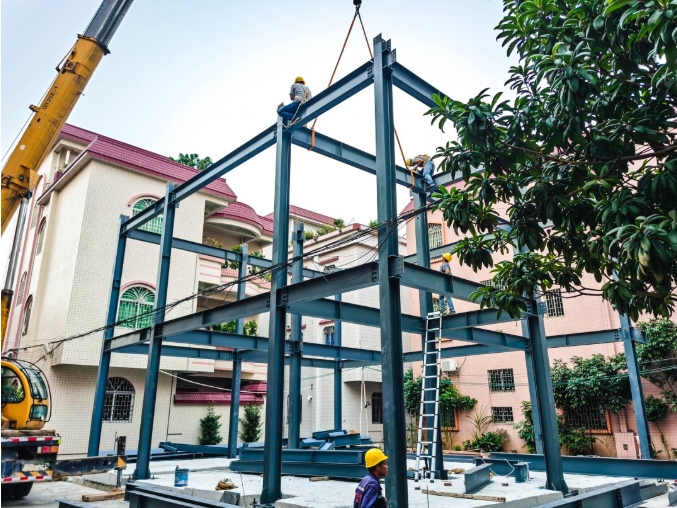Advantages of Xinguangzheng Steel Structure Residential Buildings

Xinguangzheng Steel Structure Residential Buildings refer to civil residential structures where steel serves as the primary load-bearing beams and columns. They can be categorized by height into low-rise and high-rise steel structure residences. Low-rise buildings typically utilize standard steel sections as raw materials, while high-rise buildings employ structural steel specifically designed for tall structures, ensuring safety and stability. As an emerging force in the residential market, steel structure buildings demonstrate unique advantages in building energy efficiency.
Advantages of Xinguangzheng Steel Structure Residential Buildings:
Safe and Reliable: Residential buildings using steel as the primary material have a high load-bearing capacity per unit volume. Compared to traditional brick-and-timber or brick-concrete construction, they are more stable, robust, and offer superior seismic resistance, wind resistance, waterproofing, and fireproofing performance. They also provide thermal and sound insulation. Steel possesses excellent ductility, effectively dissipating energy from seismic events, resulting in high earthquake resistance and structural safety, ensuring the overall safety of the residence.
Lower Comprehensive Cost: While the initial construction cost of steel structure residences may appear higher, considering the building's entire lifecycle, the benefits of energy efficiency, environmental protection, and the near-perpetual recyclability of the materials mean the overall cost of steel structure residences is not high.
Convenient Construction & Shorter Duration: This is a key differentiator from traditional residential construction. Traditional brick-concrete structures must account for concrete curing times. In contrast, Xinguangzheng steel components are prefabricated in factories, requiring only assembly on-site. This significantly reduces on-site workload, shortens the construction period, minimizes disturbance to surrounding residents, and reduces environmental pollution. Statistics show that for buildings of the same area, steel structures can reduce the construction period by one-third compared to concrete structures and save on formwork materials.
Green, Sustainable & Eco-Friendly: All buildings have a finite lifespan. Materials from demolished traditional brick-concrete structures are largely unusable and generate substantial waste, polluting the environment. The steel in Xinguangzheng steel structure residences is 100% recyclable, enabling true circularity. They cause significantly less pollution during both construction and demolition, aligning with the demands of housing industrialization and sustainable development.
Efficient Space Utilization:
(1) Rational Functional Zoning: Utilizing the high strength of steel allows for designs with large spans, enabling rational, flexible, and convenient division of the building plan to create open-concept homes. Traditional structures (brick-concrete, concrete) are limited by their material properties; excessively large spans lead to thick slabs, deep beams, and large columns ("bulky beams and columns"), which compromise aesthetics, increase dead weight and cost, and create potential hazards when homeowners later modify wall positions during renovations.
(2) High Space Utilization Rate: Steel sections have a smaller cross-section compared to reinforced concrete structures, increasing the usable floor area by 5%-8%. Architecturally, steel structures offer greater flexibility and richness in style. Interior spaces can be partitioned in multiple layout configurations to meet diverse user needs. They are lightweight, earthquake-resistant, and feature thermal insulation, waterproofing, heat insulation, and soundproofing functions.



